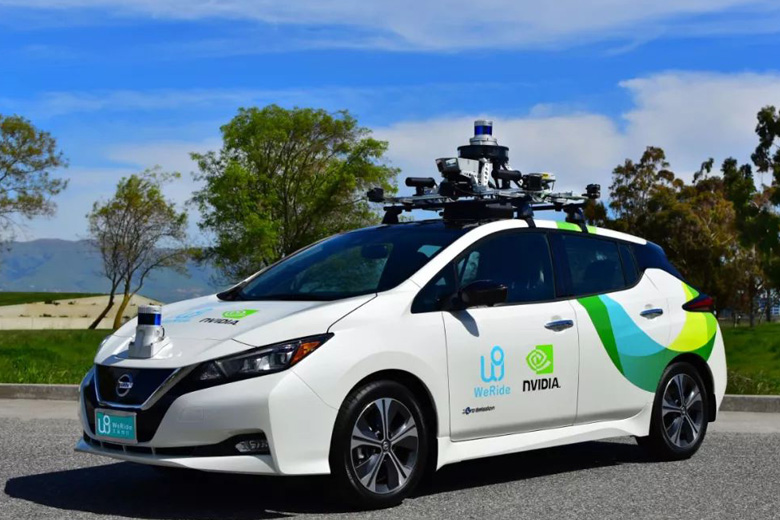With the rapid development of artificial intelligence and 5G communication technology, autonomous driving, as an important direction for future transportation, has sparked a wave of technological innovation worldwide. China, with its obvious advantages in policy support, technological innovation, market potential, and industrial chain collaboration, is rapidly emerging as a significant force in the global autonomous driving industry.
Development Background of China’s Autonomous Driving Industry The rapid development of China’s autonomous driving industry has benefited from the high attention and forward-looking planning of the government. Since 2015, the Chinese government has successively introduced a series of policy documents such as the “Pilot Management Regulations for Intelligent Connected Vehicle Road Tests (Trial)” and the “Innovative Development Strategy for Intelligent Vehicles,” providing a solid policy foundation and legal protection for the development of the autonomous driving industry. Especially recently, the notice jointly issued by five ministries and commissions on carrying out the pilot work of “unified vehicle-road-cloud” application for intelligent connected vehicles has further promoted the commercial application of autonomous driving technology and the construction of infrastructure for intelligent connected vehicles.

Technological Innovation: The Core Competitiveness of China’s Autonomous Driving Industry Technological innovation is the core driving force for the development of China’s autonomous driving industry. In key technical fields such as artificial intelligence, computer vision, and high-precision mapping, Chinese companies such as Huawei, Xiaopeng, and SenseTime have made significant breakthroughs. For example, Tesla’s FSD V12 system has achieved seamless connection from perception to control through deep learning models, greatly improving the efficiency and safety of autonomous driving. Domestic companies have also launched mass-produced autonomous driving solutions and vehicle models, promoting the commercialization process of autonomous driving technology.
Market Application: The Practice Field of Autonomous Driving Technology China’s huge automobile consumer market and well-developed infrastructure provide a broad market space for the application of autonomous driving technology. Commercial operation models such as autonomous driving taxis (Robotaxi), unmanned minibuses, and unmanned cargo vehicles have been preliminarily formed and are being piloted in various cities. The successful promotion of these commercial application models has not only improved the market acceptance of autonomous driving technology but also promoted the collaborative development of related industries.
Industrial Chain Collaboration: Building Competitive Advantage China’s autonomous driving industry has formed a relatively complete industrial chain, covering multiple segments such as hardware suppliers, software developers, system integrators, vehicle manufacturers, and operation service providers. These companies have strengthened cooperation to jointly promote the development and application of autonomous driving technology. The collaborative development model of the industrial chain has not only enhanced the overall competitiveness of China’s autonomous driving industry but also promoted the collaborative development of related industries.

Global Expansion: The “Going Global” Path of China’s Autonomous Driving Chinese autonomous driving companies are accelerating the expansion of overseas markets. Companies such as Pony.ai and WeRide have carried out autonomous driving technology and landing cooperation in many countries and regions around the world. Through various means such as cooperating with local travel platforms, establishing research and development centers, and setting up joint ventures, Chinese companies can quickly adapt to the operating environment of different countries, achieving localized operations and technical service output.
Pony.ai signed a memorandum of cooperation with ComfortDelGro, a Singaporean taxi operator, to establish a strategic partnership and jointly promote large-scale commercial operation of autonomous driving taxis. Pony.ai’s commercialization steps are not limited to the Asian market but have also expanded to countries such as South Korea, Luxembourg, Saudi Arabia, and the United Arab Emirates, accelerating the expansion of the global market through diverse cooperation models such as technology going global and product landing.
WeRide has made breakthroughs in the field of autonomous driving minibuses, launching an L4-level autonomous driving minibus carrying passenger operation route in Resorts World Sentosa, a resort in Singapore. WeRide’s business has expanded to 30 cities in 7 countries worldwide, including obtaining autonomous driving licenses in China, the United States, the United Arab Emirates, and Singapore, and achieving commercial operation in Abu Dhabi.
Lukai Zhixing, as a leading company in the field of smart mine autonomous driving, has landed its unmanned driving solutions in various places such as Xinjiang and Inner Mongolia, achieving 24-hour normal, unmanned, and multi-group operations with safety officers. Lukai Zhixing’s technical strength and market performance have made it a typical case in the “2024 China Smart Mine Autonomous Driving Industry Market Research Report” released by iResearch.
Baidu Apollo and the Institute of Intelligent Industry Research of Tsinghua University jointly released the “White Paper on Key Technologies and Prospects for Vehicle-Road Collaboration for Autonomous Driving” 2.0, emphasizing the importance of vehicle-road collaboration in improving the safety and comfort of autonomous driving. Baidu Apollo’s deep cultivation in the field of vehicle-road collaboration has not only promoted the development of L4-level autonomous driving but also brought improvements in safety performance to L2 assisted driving.
Challenges and Responses Although China’s autonomous driving industry has achieved significant results, it still faces challenges in aspects such as technology maturity, cost, data richness, infrastructure, and laws and regulations. To address these challenges, China’s autonomous driving industry is actively responding through technological innovation, infrastructure construction, data collection, and regulation improvement, continuously enhancing the safety and reliability of the autonomous driving system. The development prospects of China’s autonomous driving industry are broad. With the continuous advancement of technology and the acceleration of commercial application, China’s autonomous driving industry is expected to continue to maintain a leading position in the future, making an important contribution to the development of global autonomous driving technology. At the same time, the global expansion of China’s autonomous driving industry also provides opportunities for reference and cooperation for other countries and regions around the world, jointly promoting the development and progress of the global autonomous driving industry.

Comments are closed